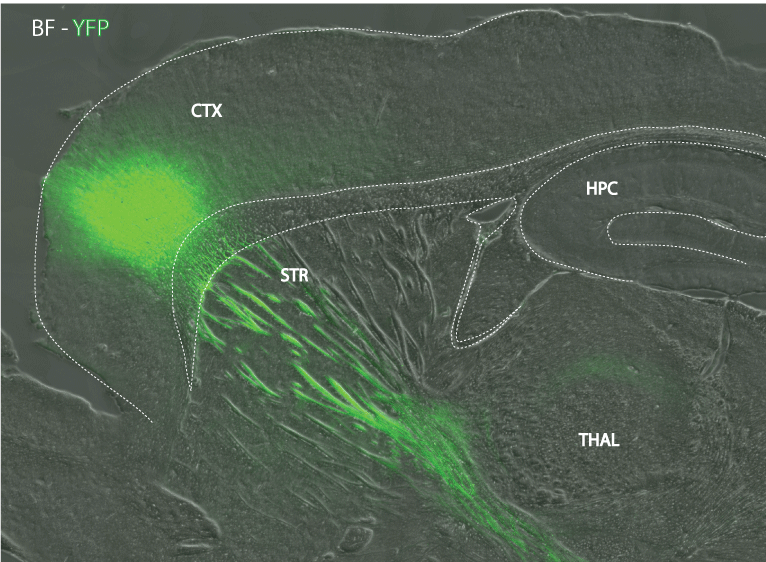

NEUROPA PROJECT
A new era for brain therapy

The NEUROPA Project has received funding from the European Union’s Horizon 2020 Research and Innovation Programme under Grant Agreement No. 863214


NEUROPA - AT A GLANCE


NEUROPA is an EU-funded project which aims to combine cutting-edge research from the new field of phytoptogenetics combined with 2-photon laser technology for non-invasive long-term alleviation of brain dysfunction.
There is an enormous human toll of brain disorders in Europe, with an estimated 83 million people affected. NEUROPA will develop a novel non-invasive theranostic approach that will modulate long-term activity in specific cortico-sub-cortical networks implicated in specific brain disorders.
Download our leaflet to find out more about the NEUROPA project




ABOUT
NEUROPA integrates cutting edge technology in lasers, phytochromes, optogenetics, viral delivery and diffusion wave spectroscopy to treat neurodegenerative diseases
2-PHOTON LASER TECHNOLOGY
NEUROPA will develop compact laser sources for non-invasive two-photon activation and deactivation (on/off) of phytochromes in the mouse brain model.
The developed compact ultra-short pulse laser will emit in the 1000-1700 nm spectrum range using two main mode-locked laser configurations:
- Optically pumped VECSELS (gain materials will be based on QW and QD materials)
- Fibre and Raman shifted fibre lasers based on YDFL gain fibre
Both configurations can support the delivery of laser technology in the 1000-1700 nm wavelength range in the fs regime and with average power up to 500mW

PHYTOPTOGENTICS
Phytochromes are a class of photoreceptor found in plants. They are sensitive to light in the red and far-red region of the visible spectrum. NEUROPA will design and develop novel bimodally switchable phytochrome switches.
Candidate phytochromes will be subject to:
- Spectroscopical and Mechanistic analyses
- Optimization of their spectral response
The selected phytochromes will be deployed in cellular optogenetics.
NON-INVASIVE GENE DELIVERY
Non-invasive gene delivery across the Brain-Blood Barrier will utilise Adeno-associated viruses (AAV). They are currently not known to cause disease.
NEUROPA will:
- Package each vector system with cell-type specific promoters controlling the expression of phytochromes
- Develop a safe target specific AAV delivery system via systemic injections.
- Use directed evolution of AAVs to find variants capable of brain gene delivery via intranasal administration
- Facilitate expression of phytochromes in the targeted mouse barin areas using intranasal administration of AAV

DWS BRAIN HEMODYNAMIC MONITORING AND FEEDBACK
Non-invasive monitoring of the the activation of phytochromes leading to the modulation of brain network activity can be achieved using Diffusion Wave Spectroscopy (DWS)
NEUROPA will:
- Develop murine brain hemodynamic phantoms
- Optimise light source-detector geometry for DWS measurements
- Reveal correlation between blood velocity and phytochrome excitation.
IN-VIVO PHYTOPTOGENETICS NEURO-STIMULATION
The technology advances will be combined into a proof of concept system able to non-invasively modulate long-term activity by in vivo phytoptogenetics neuro-stimulation. This will be performed in specific cortico-sub-cortical circuits to restore cognitive, motor and affective dysfunction in neurodegenerative mouse models, such as Huntington’s and Alzheimer’s disease.
NEUROPA will:
-Demonstrate functional in vivo effect of phytochrome activation.
-Demonstrate 2P light-induced phytochrome in vivo circuit specific modulation
-Recover motor and cognitive symptoms by 2P phytochrome activation in Huntington’s and Alzheimer’s disease mouse models
Specific cortical projections to subcortical structures in the mouse brain. In green, pyramidal projection neurons from frontal cortex expressing YFP.
Dr. Mercè Masana
University of Barcelona




Compact shoe-box size MIR laser based on technology developed by the Coordinator.
Prof E. Rafailov. NEUROPA will develop a new NIR laser for non-invasive activation and deactivation of phytochromes.
Active site of the Deinococcus radiodurans phytochrome showing the biliverdin (BV) chromophore covalently attached to the cysteine residue.
Dr. Andreas Moeglish
University of Bayreith.



Molecular model of Adeno-Associated Virus (AAV9) capsid. AAV Viruses are small (20nm) replication-defective, nonenveloped viruses not currently known to cause disease.
Dr. Deniz Dalkara, Sorbonne University
A simple approach for non-invasive transcranial optical vascular imaging (nTOVI).
Prof. Igor Meglinski (University of Oulu) and co-workers
(Invited lecture: “Laser imaging of brain – new perspectives”, Brain Malformations: A Roadmap for Future Phenotyping and Research, Weizmann Institute of Science, Rehovot, Israel, 17 – 20 March 2019)

NEUROPA Introduction - Derek McKenzie, DLM Consultancy Services

IDiana Galiakhmetova, researcher at Aston explains how NEUROPA will deliver a unique career opporrtunity

WP Leaders
Clockwise
Edik Rafailov, Aston University - Coordinator & Leader of Work Package 1 - Two-photon laser technology.
Andreas Moeglich, University of Bayreuth - Work Package 2 Leader - Phytoptogenetics
Deniz Dalkara, Sorbonne University - Work Package 3 Leader -
Non-invasive gene delivery.
Igor Meglinski, Oulu University - Work Package 4 Leader -
DWS monitoring & feedback.
Merce Masana, University of Barcelona - Work Package 5 Leader -
In-vivo Neuro-Stimulation.
Derek McKenzie, DLM Consultancy Services - Work Package 6 Leader - Innovation Management, Dissemination & Exploitation
CONTACT NEUROPA
School of Engineering and Applied Science, Aston University, BIRMINGHAM, B4 7ET, UK
Coordinator: Professor Edik Rafailov. Email e.rafailov@aston.ac.uk
Telephone: 0121 204 3718

Prof. Igor Meglinski (University of Oulu) and co-workers
(Invited lecture: “Laser imaging of brain – new perspectives”, Brain Malformations: A Roadmap for Future Phenotyping and Research, Weizmann Institute of Science, Rehovot, Israel, 17 – 20 March 2019)

The NEUROPA Project has received funding from the European Union's Horizon 2020 Research and Innovation Programme under Grant Agreement No. 863214







